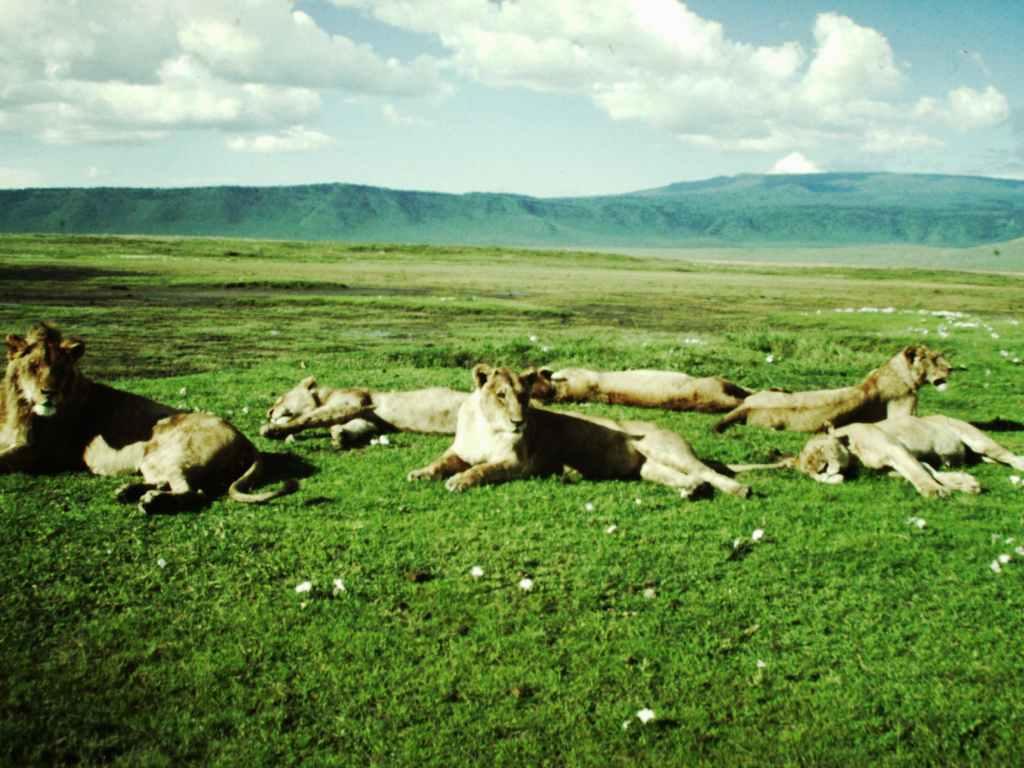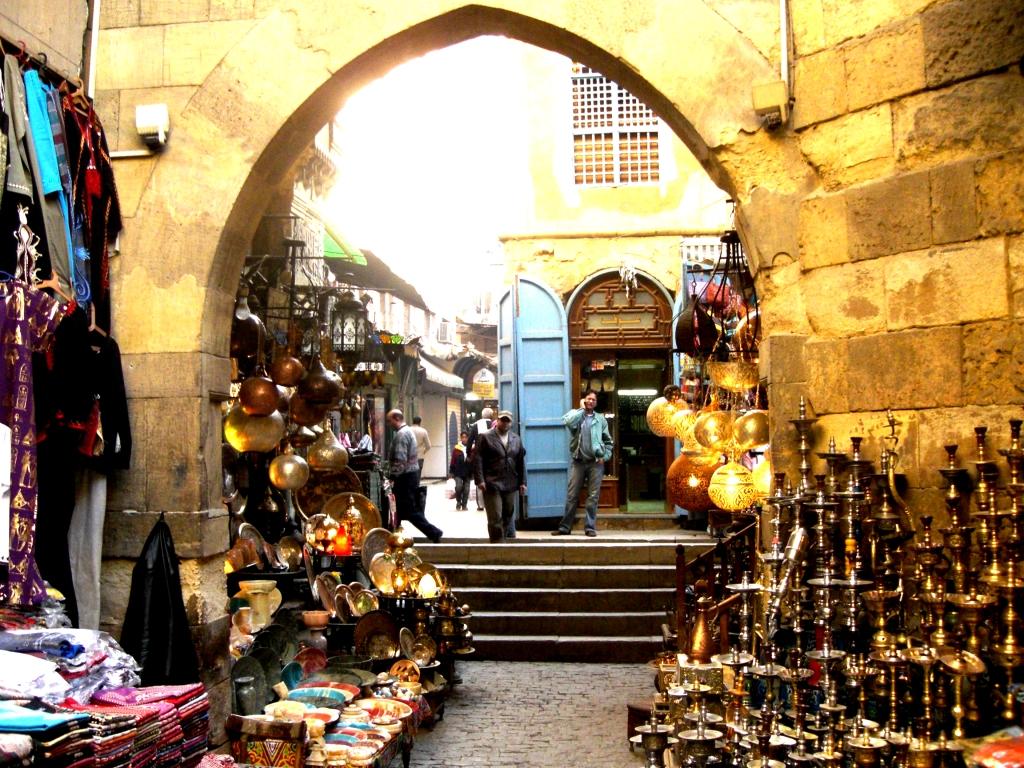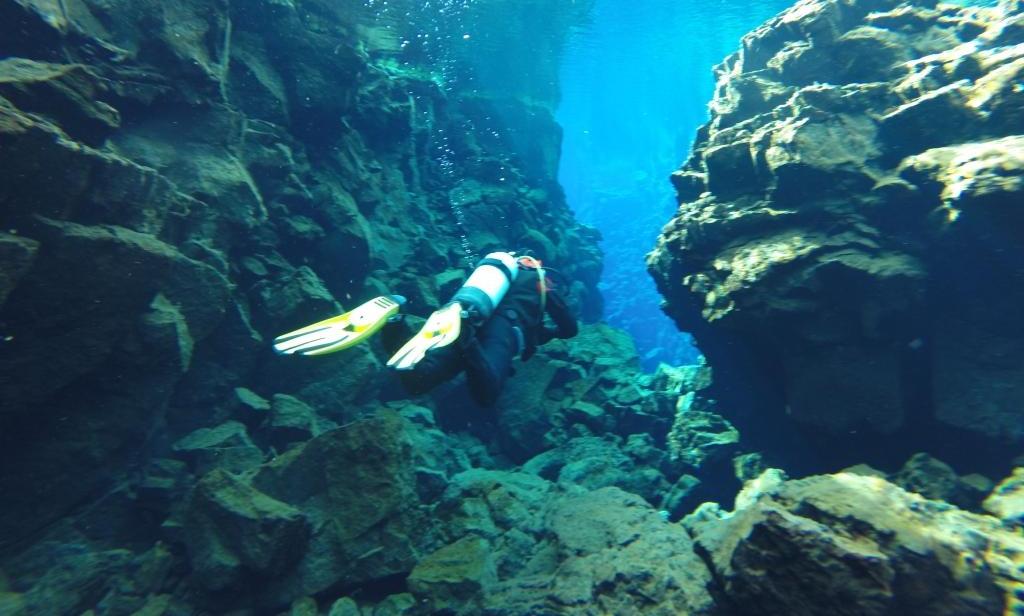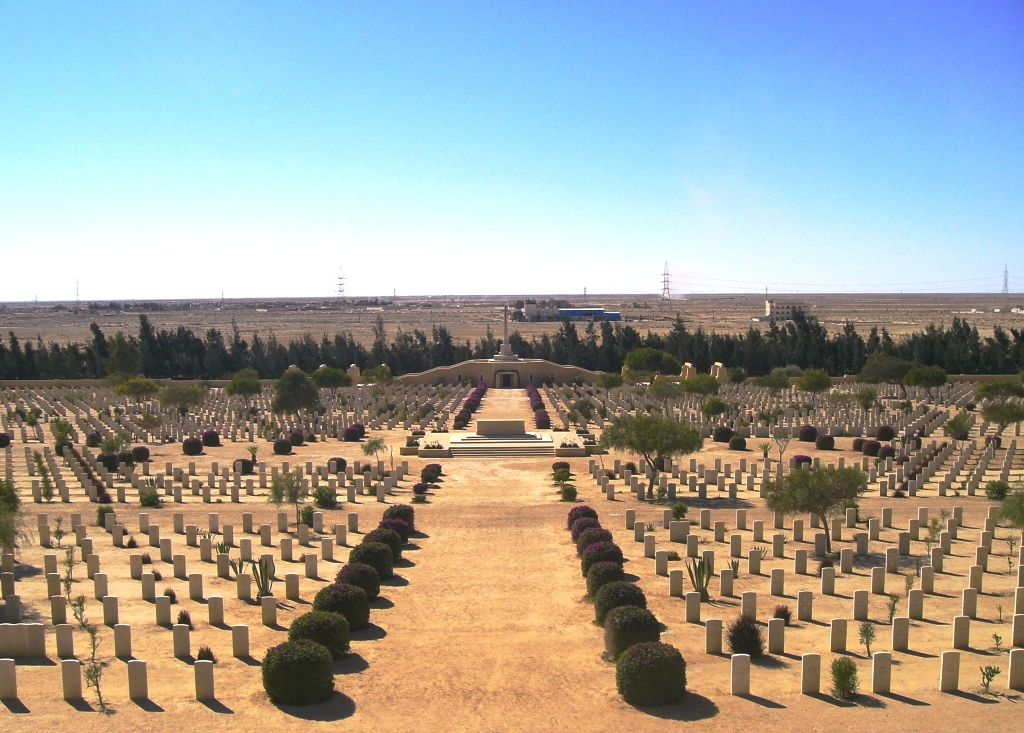From the rim 2,000 feet above the crater floor, you can look down into this vast hole in the earth and see teeny little specks moving about. Wildebeest. Zebra. Even the elephants look like tiny toys.
NgoroNgoro Crater is a place of superlatives: the world’s largest unflooded and unbroken crater, containing perhaps the world’s most impressive concentration of animals. A UNESCO World Heritage Site, the crater is home to some 25,000 large mammals — almost all of the major animals to be found in East Africa, with the exception of impalas, topis, oribis, giraffes, and crocodiles.
In Your Bucket Because…
- NgoroNgoro contains the biggest concentration of wild African animals in the world.
- There is nowhere else like it. Period.
- Good for wildlife lovers, photographers, adventurous families with animal-loving kids (and which kids aren’t?). Not cheap.
To get there requires a bone-rattling descent from rim to valley floor in a stripped-down four-wheel-drive Landrover. This particular one may be due for a check of its suspension system. The road makes it clear why four-wheel drive vehicles are the only ones allowed down. We cling to our seats, bouncing as the van navigates the ruts and rocks and snakes down the 2000-foot wall (imagine the top-to-bottom distance at a major American ski area; that’s the elevation change).
We are clearly descending into another layer of the world, and another world it is.
NgoroNgoro
No one really knows the origin of the word Ngorongoro. A quick etymology check turns up a handful of competing guesses, perhaps a reference to the people who once lived here, or an allusion the shape of the crater, which resembles a traditional bowl. The answer is obscured in the fog of oral history.
So we turn to geology to tell us what this place is: A volcano, formerly the size of Kilimanjaro, whose caldera collapsed some two to three million years ago, forming what is today the largest unbroken caldera in the world. With plentiful water, abundant grass, and enough space, the approximately 10- to 12-mile diameter crater forms a sort of natural holding pen, although some animals do sometimes migrate up and down the crater walls.
Visiting the Crater
Traditionally, visitors have stayed at one of the crater rim lodges. But some tour companies offer the crater as a day-stop, between coming from somewhere else and heading on, often to the Serengeti for lodging and game viewing elsewhere.
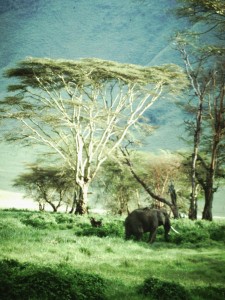
After descending to the bottom, vehicles fan out over a network of rutted dirt trails. Up to 500 cars a day come into the crater during the high season, which sounds like a lot, but they are spread out over the course of the day, and also geographically over the 100 square miles of the crater floor. The problem is that when a guide sights, say, a lion, or an elephant, he often radios word to tour company partners, who then hurry over for the sighting. If the sighting is of one of the “big five”– lion, leopard, elephant, Cape buffalo, and rhinoceros — crowds get even thicker. Current regulations limit the number of vehicles around an animal or a kill (to five, as of 2020), but that doesn’t stop other groups from lining up to take their turn. You can’t blame anyone, really: Not the tourists, who have paid a premium fee for this premium experience, not the drivers and guides, who know their tips will be based on their clients having snapped their once-in-a-lifetime photographs.
After all, I thought, jostling for position to photograph a lion that was actually rubbing against one of the van’s tires — “Heads and arms inside the van, everyone!” barked the guide) — I wanted those pictures, too.
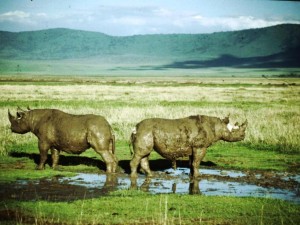
A few interesting tidbits from our guide:
- Leopards mostly live on the rim, so you’re unlikely to see one in the crater.
- Most of the elephants in the crater are bulls; the females live on the rim, necessitating a fairly significant climbing expedition during the mating season.
- Up to about 20 percent of the wildebeests leave to join the massive migrations through nearby Serengeti and Masai Mara.
- Because of plentiful food, NgoroNgoro lions are larger than average, and able to fend off incursions by outsiders. As a result, the lions here are fairly inbred, with some genetic anomalies.
Practicalities
- Only four-wheel drive vehicles are allowed to enter the Crater. All vehicles must have standard safari equipment (heavy-duty jack; chain/rope; shovel/hoe; axe/panga). If you have your own vehicle, you must take a guide with you.
- Regulations have varied in recent years regarding fees, permits, and how long visitors were allowed to spend in the crater. The NgoroNgoro Area Conservsation Authority has the most recent information.
- Early morning is the best time to see and photograph animals because they are more active in the morning (and early evening), because the light is better for photography, and because the crowds are thinner at the crack of dawn.
Republished and updated in 2020.
